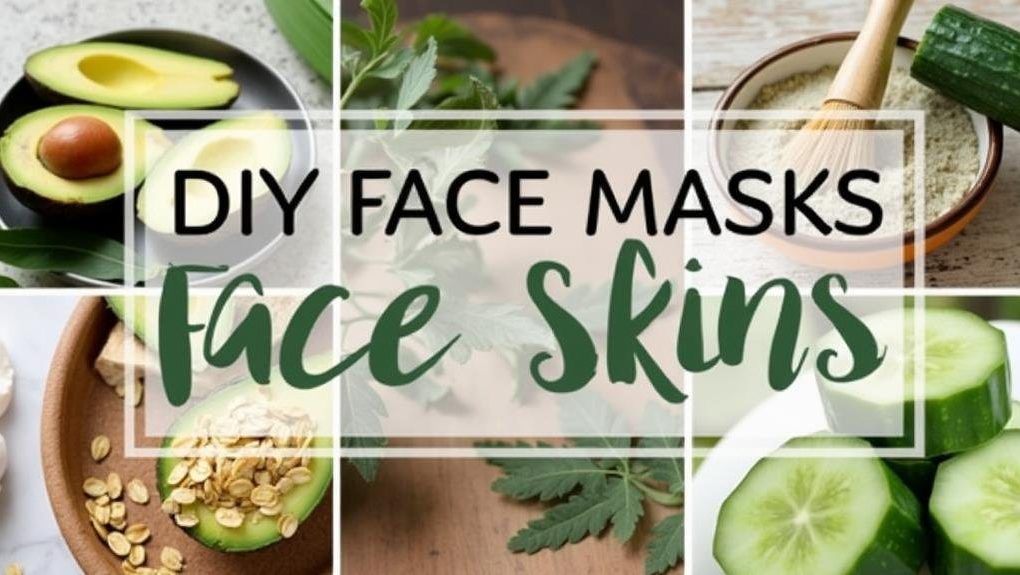In terms of skincare, finding the right DIY face mask for your specific needs can be a game-changer. You’ve got options for every skin type, from hydrating masks for dryness to clarifying treatments for excess oil. Consider how natural ingredients like honey, oatmeal, and turmeric can transform your routine. But before you apply anything, it’s essential to understand how different components work for your skin. Curious about which masks might suit you best? Let’s examine some effective recipes and tips that could enhance your skincare game.
Considerations Before Using Treatments
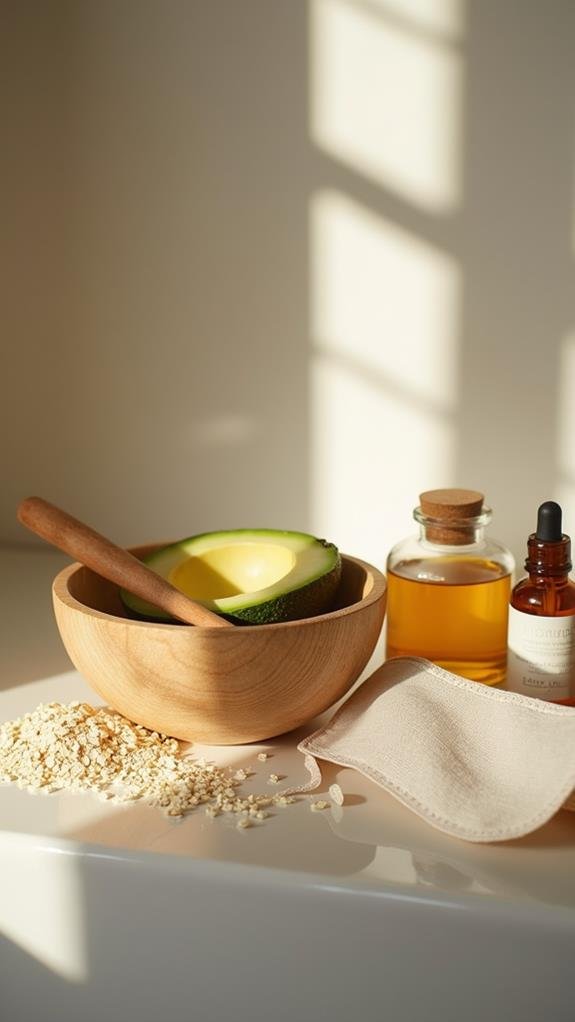
Before diving into DIY face masks, it’s essential to take into account your unique skin needs. Your skin type plays a big role in determining which homemade face mask will work best for you. Not all DIY treatments are suitable for every skin condition, so knowing your skin type is important.
Always perform a patch test on a small area of skin before applying a mask to your entire face; this helps you check for any allergic reactions or sensitivities.
Proper hydration is critical for skin health, too. Drinking plenty of water not only keeps your skin hydrated but also improves the effectiveness of any mask you apply.
Also, remember to avoid alcohol and sugar in your diet before important events. These can lead to breakouts, which you definitely don’t want while preparing for a special occasion.
When you apply a mask, follow the recommended duration for each one to avoid skin irritation; leaving it on for too long can cause more harm than good.
Hydrating Ingredients for Skin Types
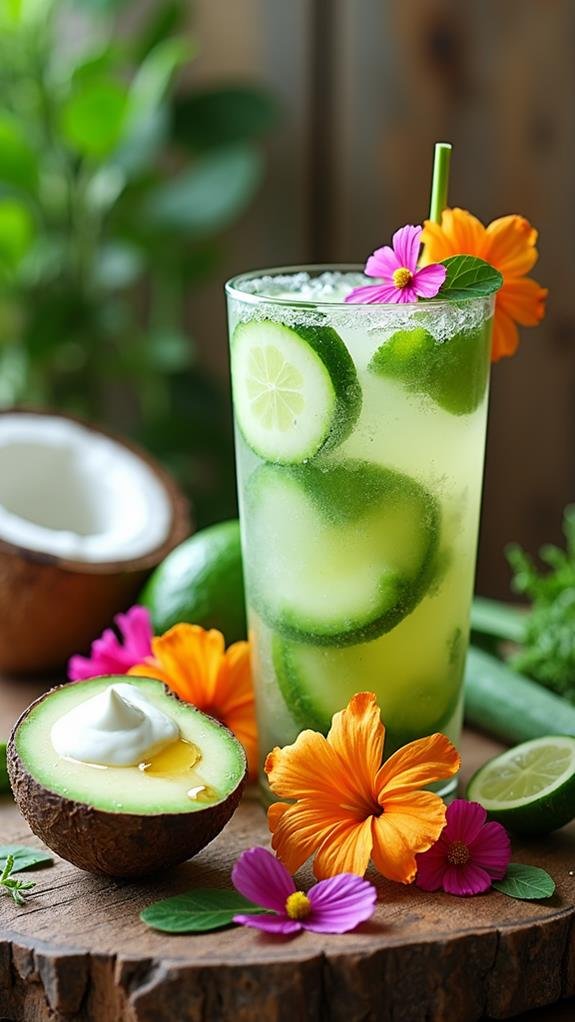
Understanding your skin type sets the stage for choosing the right hydrating ingredients that can improve your DIY face masks.
If you have dry skin, consider using avocado, which is packed with omega-3 fatty acids and vitamin B. When mixed with honey, it works wonders to lock in moisture. Honey, a natural humectant, is fantastic for all skin types, especially for those prone to acne, as it helps retain moisture while promoting healing.
Coconut oil is another great option for dry skin, offering intense hydration. Just be cautious if you have oily skin, as it can clog pores. For an extra moisture boost, try combining coconut oil with cocoa butter, making it a perfect match for dry skin types seeking deep hydration.
Milk is also a good choice, thanks to its lactic acid, which gently exfoliates while providing hydration. This makes it suitable for various skin types that need a moisture lift.
Exfoliating Ingredients and Techniques
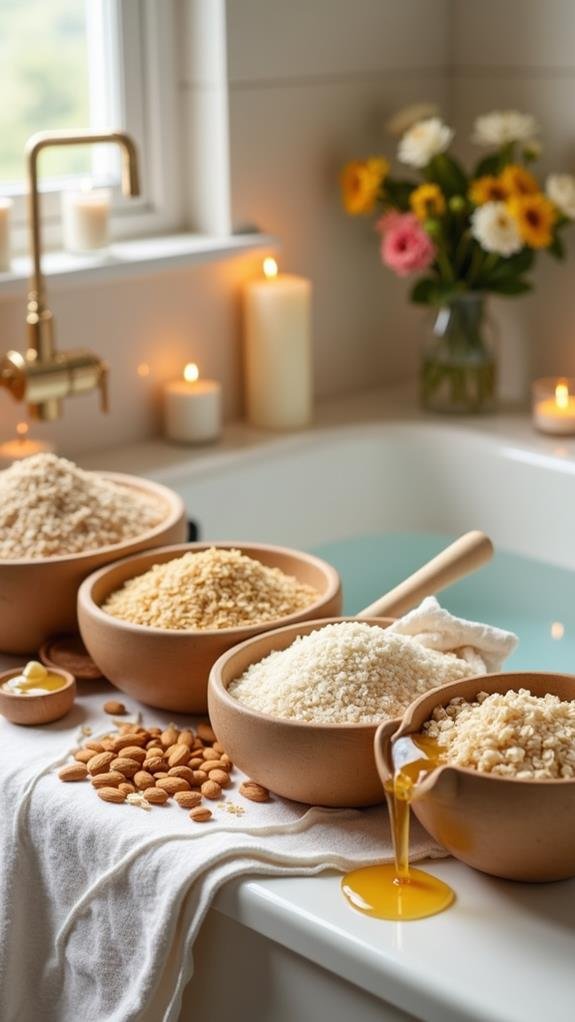
Exfoliating your skin is essential for achieving a radiant complexion, and there are several effective ingredients and techniques you can use. Regular exfoliation helps remove dead skin cells, improving skin texture and promoting cell turnover.
For those with sensitive skin, natural exfoliating ingredients like brown sugar and oatmeal can gently slough off dead skin without causing irritation.
If you prefer a gentler approach, enzyme-based exfoliants made from fruits like papaya and pineapple dissolve dead skin cells without the need for scrubbing. These are great options for maintaining a fresh look.
For individuals with oily skin, salicylic acid is a hero ingredient. It unclogs pores and reduces excess sebum production, making it ideal for acne-prone skin.
To get the best results, aim for regular exfoliation 1-2 times a week, but listen to your skin. If it feels sensitive or irritated, adjust the frequency accordingly.
You can easily incorporate these exfoliating ingredients into DIY face mask recipes to improve your skincare routine. Remember, finding the right balance is key to keeping your skin healthy and glowing!
Masks for Specific Skin Concerns
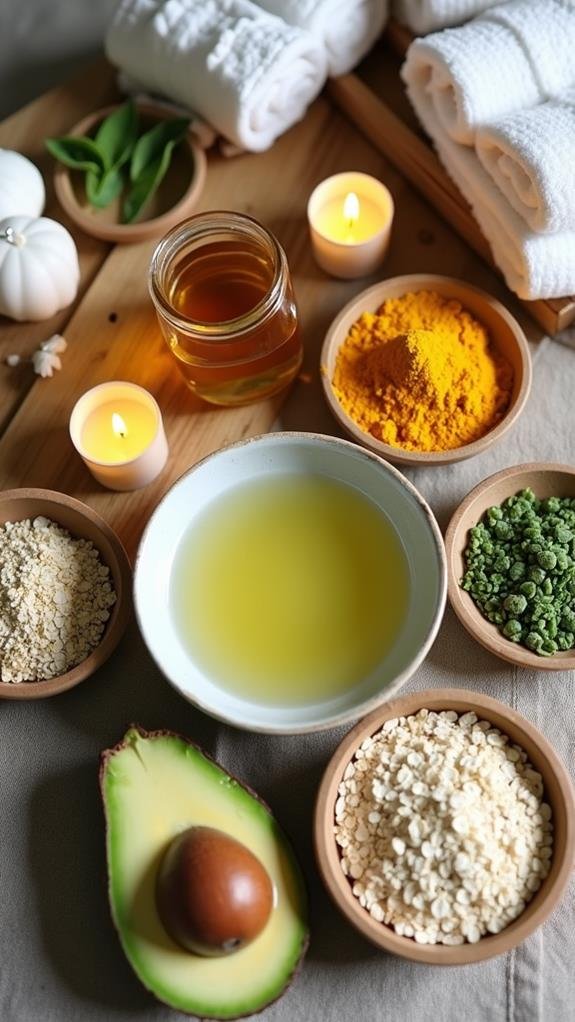
With regard to addressing specific skin concerns, choosing the right face mask can make all the difference.
If you struggle with acne, consider using acne treatment masks that contain natural ingredients like tea tree oil, activated charcoal, or honey. These options can help reduce bacteria and unclog pores effectively.
For those with dry skin, hydrating masks made from avocado, honey, or yogurt are perfect. These masks help nourish your skin, restoring moisture and elasticity.
If you want to brighten your complexion, look for brightening masks that include turmeric, lemon juice, or papaya. These ingredients can help reduce dark spots and improve your overall skin tone.
If you have sensitive skin, soothing masks made with oatmeal, aloe vera, or chamomile are excellent choices. They can help reduce redness and calm irritation.
Lastly, for anyone dealing with oily skin, pore minimizing masks containing bentonite or kaolin clay can absorb excess oil and tighten pores.
Essential Oils and Their Benefits
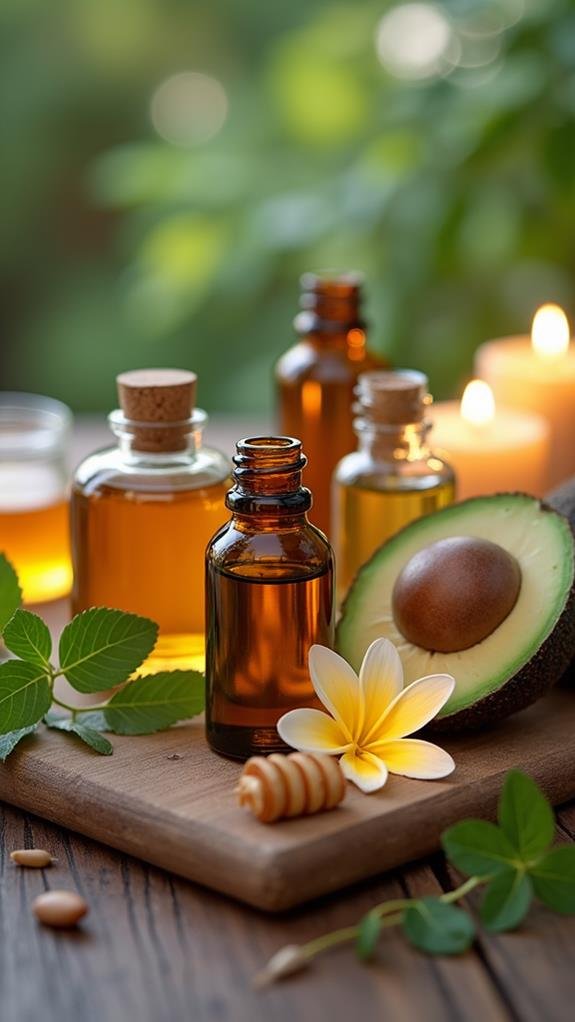
When crafting your DIY face masks, you might want to improve their effectiveness by incorporating essential oils. These concentrated plant extracts carry natural aromas and beneficial properties, making them a fantastic addition to your skincare routine.
For instance, lavender essential oil is known for its calming and soothing properties. It can help reduce skin irritation and promote relaxation, perfect for a calming mask after a long day.
If you struggle with acne or oily skin, tea tree oil is your go-to. With its impressive antibacterial properties, it helps unclog pores and reduce inflammation, making it effective for treating breakouts.
On the other hand, chamomile essential oil is great for sensitive skin. It boasts anti-inflammatory and antioxidant properties that can soothe irritation and reduce redness.
Safety Practices for DIY Treatments
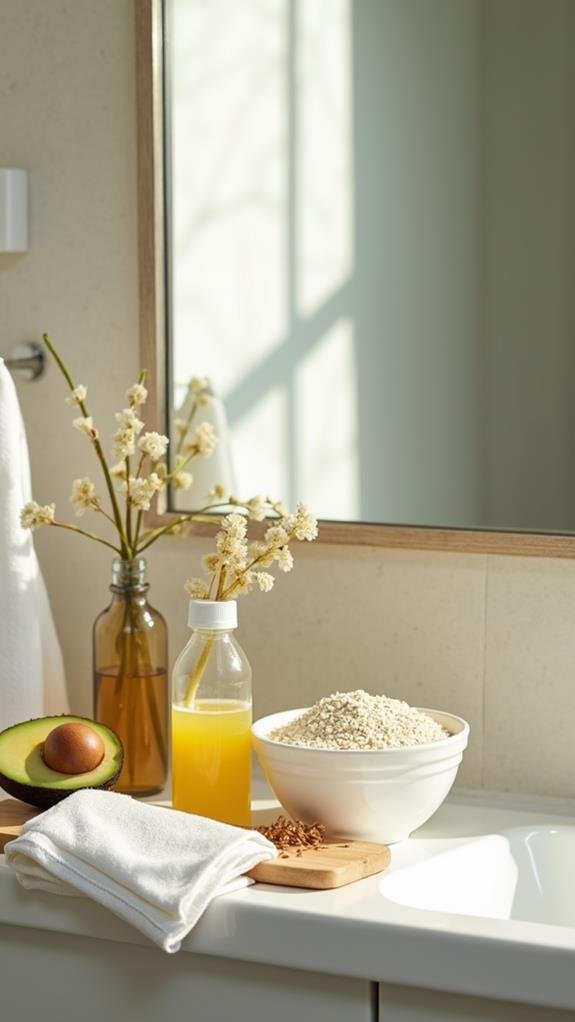
Guaranteeing your safety while creating and using DIY face masks is essential for achieving the best results without risking skin irritation or adverse reactions. Start by performing a patch test on a small area of your skin before applying a new mask. This simple step helps you check for any allergies or irritation.
Next, always use clean utensils and containers when mixing your ingredients. This practice maintains hygiene and prevents any contamination that could lead to bacterial growth.
Opt for fresh ingredients whenever possible, as they provide maximum efficacy and help keep your skin healthy. Be mindful of application times, which typically range from 10 to 20 minutes. Following these guidelines will prevent irritation or over-exposure to the active ingredients in your mask.
If you have any leftover masks, store them in a cool, dry place and aim to use them within a few days. This guarantees that they stay fresh and potent for your next skincare session.
Simple Ingredient Masks
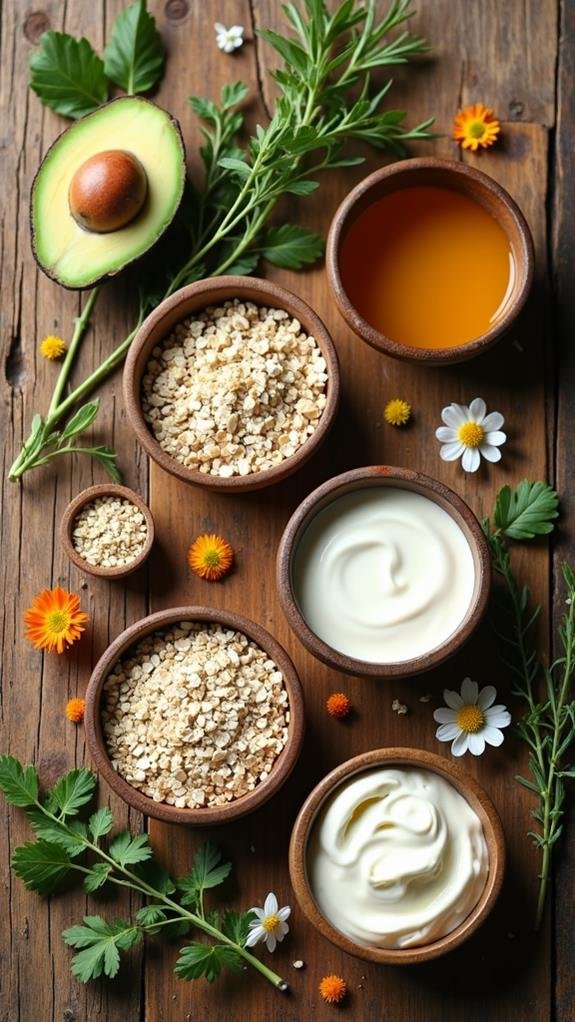
Simple ingredient masks offer a fantastic way to nourish your skin using items you likely already have at home. These DIY masks are quick to prepare and often use just a few natural ingredients. For instance, a mix of banana and honey creates a versatile mask that works wonders for all skin types, promoting moisture retention and leaving your skin feeling soft.
If you have sensitive skin, consider a simple recipe of oatmeal and aloe vera. This combination soothes irritation while providing hydration. The antibacterial effects of honey also help keep your skin clear and healthy, making it a great addition to many simple recipes.
You can whip up an avocado mask for an extra boost. Avocado acts as a hydrating moisturizer, deeply nourishing your skin with its rich, creamy texture.
Benefits of Key Ingredients
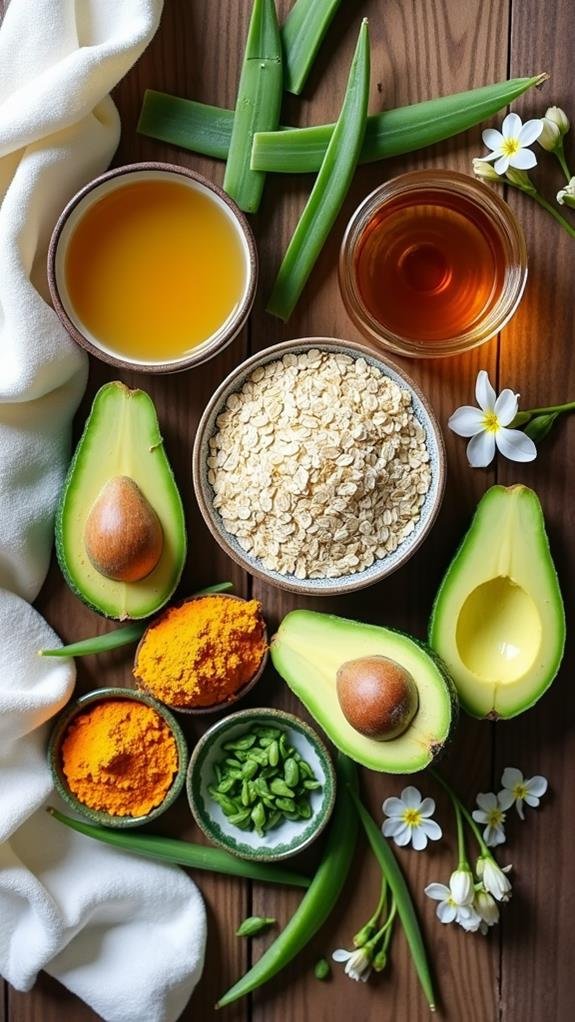
Often overlooked, the key ingredients in DIY face masks can greatly improve your skincare routine. These natural elements not only nourish your skin but also address specific concerns.
For example, honey acts as a natural humectant, helping retain moisture in your skin. This makes it especially beneficial for dry and acne-prone skin due to its antibacterial properties.
Avocado is another powerhouse ingredient, packed with healthy fats and vitamin E. It nourishes and hydrates dry skin, promoting elasticity and overall skin health.
If you’re looking for hydration and gentle exfoliation, yogurt is perfect. It contains lactic acid, which brightens your complexion while providing moisture, making it suitable for sensitive and combination skin types.
Don’t forget about turmeric! This ingredient boasts anti-inflammatory and antioxidant properties, which help reduce redness and improve your skin tone.
Furthermore, aloe vera is renowned for its soothing qualities. It calms irritated skin and offers hydration, making it ideal for sensitive and sunburned skin.
Chemical Peels Overview
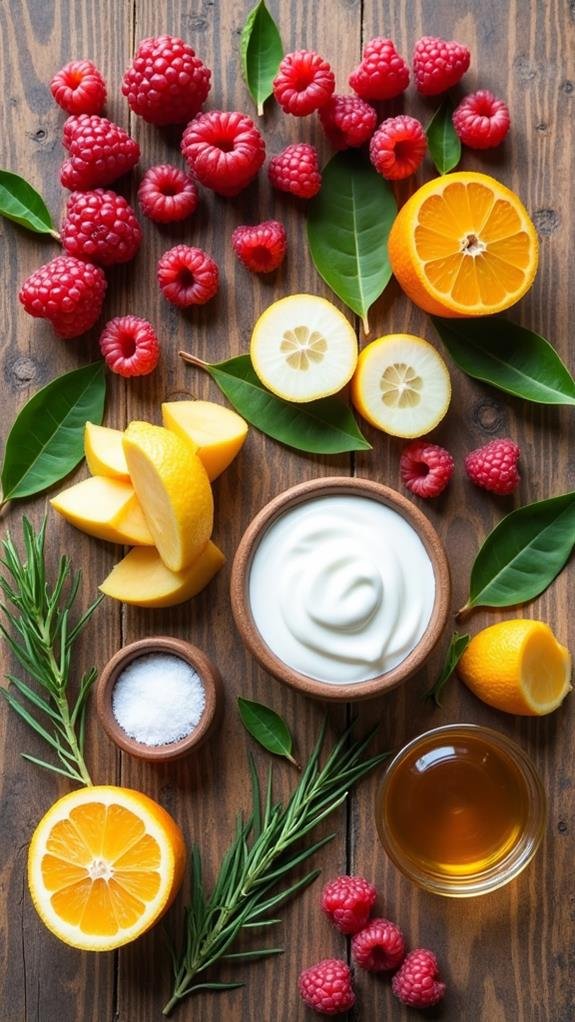
In regard to enhancing your skin’s appearance, chemical peels offer a powerful solution by removing the outer layers of skin. These treatments target various skin concerns, such as wrinkles, acne, and hyperpigmentation.
There are three main types of chemical peels: superficial peels, medium peels, and deep peels. Superficial peels use mild acids like glycolic acid for light exfoliation, while medium peels utilize trichloroacetic acid (TCA) for deeper exfoliation. Deep peels, on the other hand, typically use phenol for significant skin rejuvenation.
Results can vary based on the type of peel you choose and your individual skin type. Deeper peels often yield more dramatic results, but they also require longer recovery times. For instance, superficial peels may only need a few days for recovery, whereas deep peels can take several weeks.
While chemical peels are effective, they can come with side effects like redness, swelling, and peeling. That’s why it’s important to have a consultation with a skincare professional before undergoing a peel.
They can help determine the best treatment plan based on your unique skin needs and guarantee you’re ready for the process.
Reliable Skincare Information

Steering the world of skincare can be overwhelming, especially with the vast array of products and treatments available. To make informed choices, you need reliable skincare information that caters to your individual skin types and concerns.
It’s vital to seek out peer-reviewed studies and high-quality sources that improve the accuracy of the advice you receive. Regular updates on skincare research are significant in this constantly changing field of dermatology.
Understanding the ingredients in skincare products helps you make better decisions for your skin health. You’ll want to be aware of potential allergies that certain ingredients might cause, so always read labels carefully.
Consulting with skincare professionals, like dermatologists, can provide you with personalized recommendations tailored to your specific skin conditions. They can help you navigate the world of skincare products and suggest what works best for you.
Foot and Hand Care
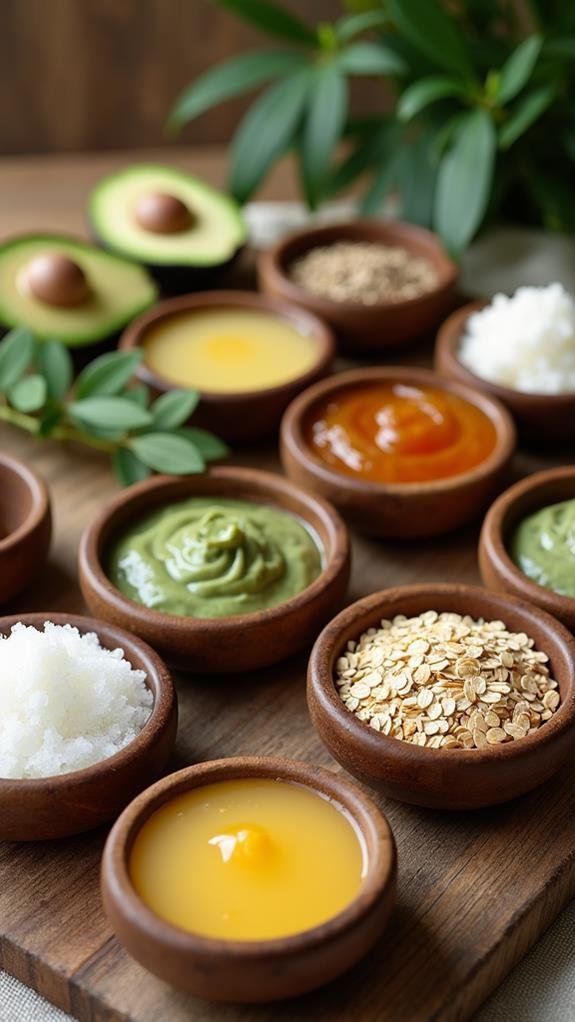
Taking care of your hands and feet is essential for overall skin health, yet it’s often overlooked in skincare routines.
Regular exfoliation of your feet using a pumice stone or foot scrub can effectively remove dead skin cells, helping to prevent dryness and cracked heels. After exfoliation, treat your feet to a soothing foot soak with warm water and Epsom salt. This helps relax tired feet and eases soreness, while also aiding in the removal of rough skin.
For your hands, consider a paraffin wax treatment, which provides intense hydration and is perfect for combating dry, chapped skin, especially during colder months.
Daily moisturizing is vital too; using creams that contain nourishing ingredients like shea butter or coconut oil can greatly improve your skin barrier, preventing dryness and cracking.
Don’t forget to pamper your feet with a foot mask packed with hydrating ingredients like aloe vera or honey. This extra layer of moisture will keep your feet feeling soft and healthy.
Hydrating Skin Mask Recipes

After giving your hands and feet some much-needed attention, it’s time to focus on your face with hydrating skin masks.
These DIY masks are perfect for adding moisture back into your skin, especially if you have dry or combination skin types. One simple recipe combines aloe vera gel and honey. The aloe soothes and hydrates while honey provides essential fatty acids, making your skin feel refreshed.
Another great option is a mask with plain yogurt. This ingredient not only helps to gently exfoliate your skin but also adds moisture due to its lactic acid content. Mix yogurt with mashed avocado for an extra boost of hydration!
If you want to get creative, try a milk mask. The proteins in milk help retain moisture and soften your skin.
Regularly applying these hydrating masks—about 1 to 2 times a week—can greatly improve your skin’s texture and appearance.
Conclusion
Incorporating DIY face masks into your skincare routine can be a fun and rewarding experience. By using natural ingredients tailored to your skin type, you can address specific concerns while giving your skin the care it deserves. Remember to patch test new ingredients and enjoy the process of uncovering what works best for you. With the right masks, you’ll not only improve your skin’s health but also boost your confidence. Happy masking!

